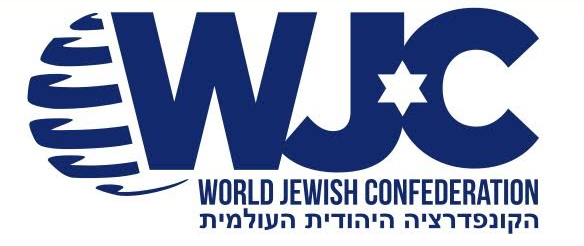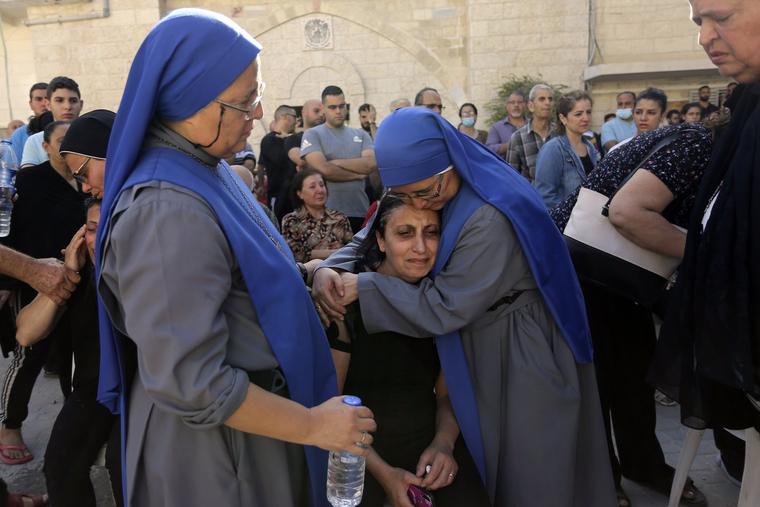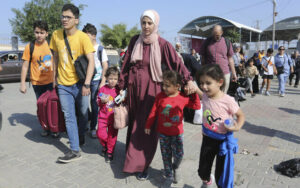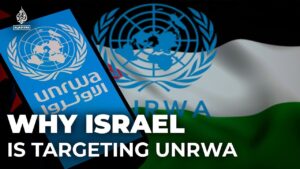Israel-Hamas Conflict 2023: Humanitarian Efforts
Israel-Hamas Conflict 2023: Humanitarian Efforts
Updated to December 16, 2023
Israel is currently engaged in a war with Hamas, Islamic Jihad and other terrorist organizations in the Gaza Strip, following the horrific attack carried out by these armed groups against Israel on October 7, involving the massacre of over 1,200 Israelis and foreign nationals and the wounding of thousands more, the commission of acts of unspeakable barbarism and cruelty, including burning people alive, beheadings, mutilation, torture and sexual violence, and the abduction into Gaza of over 240 hostages, including babies, children and the elderly.
Since October 7, Hamas and other terrorist organizations in the Gaza Strip have also continued to carry out constant attacks against Israeli civilians, including the indiscriminate firing of over 12,000 rockets and mortars at Israeli cities, towns and kibbutzim across the country, causing deaths, physical and mental injury, destruction and damage to property and the displacement of over 150,000 Israelis.
At the same time, Israel is cognizant of the hardships and suffering of the civilian population in Gaza. The cause of much of this hardship and suffering – sometimes the direct cause, and sometimes the root cause – is Hamas’s actions as the governing authority of Gaza and its military practices.
Israel has undertaken, and continues to undertake, substantial efforts to alleviate the humanitarian situation in Gaza, and is working closely with international stakeholders to advance this objective. The following provides details on these efforts.
What are the causes of the current humanitarian situation in Gaza?
Genuine concern for the humanitarian situation in Gaza must begin by recognizing Hamas’s responsibility for the harm, destruction and suffering caused to Gaza’s civilian population from the current hostilities initiated by Hamas, including:
- The deliberate and systematic military strategy of Hamas to interweave its military operations within civilian infrastructure, including by using hospitals for command and control of military activities and for weapons storage; the abuse of schools for weapons production; the exploitation of critical civilian infrastructure in order to shield adjacent rocket launching sites.
- Hamas’s repeated hijacking and looting of aid intended for civilians during these hostilities (including stealing fuel from the UN), and over many years (including through the diversion of cement and other materials intended for residential building towards building extensive tunnels).
- Hamas’s active measures to frustrate IDF efforts to evacuate civilians from areas of hostilities and use of civilians as human shields.
- Neglect of its responsibility as the existing governmental authority in Gaza to care for the population it controls, and to protect civilians from the consequences of hostilities.
Further, Hamas has directly harmed civilian infrastructure and services for civilians –
- Since October 7, Hamas and other terrorist organizations in Gaza have been responsible for more than 1,900 misfired rockets that have landed within Gaza, including in densely populated areas, causing death, injury and destruction.
- On October 7, nine out of the 10 electricity lines from Israel, and one water pipe from Israel, were hit by Hamas fire.
- Hamas invaded the Erez crossing in the north of Gaza (the crossing through which people from Gaza passed into Israel with work permits, for medical treatment and other purposes, and through which personnel from international organizations passed into Gaza), caused significant damage, and murdered and abducted personnel – including personnel whose role is to support the humanitarian efforts described herein.
- Hamas has directed constant fire at the Kerem Shalom crossing in the south of Gaza (the crossing through which goods and aid pass through into Gaza).
- Hamas has booby-trapped countless civilian structures in Gaza, including schools, in order to harm IDF ground forces operating in Gaza.
The current hostilities, especially as they take place within civilian areas in Gaza, have exacerbated the humanitarian situation. Israel has no intent nor desire to cause suffering or hardship to civilians. As stated clearly and repeatedly by Israel’s senior political and military leadership, Israel’s war is against Hamas and the other terrorist organizations in Gaza and not against the civilian population. Israel is implementing various measures to mitigate civilian harm during its military operations, in addition to the humanitarian efforts detailed below.
What are Israel’s obligations under international law?
Under the law of armed conflict (also known as international humanitarian law), parties to an armed conflict are required to allow and facilitate access to consignments of supplies essential for the survival of the civilian population if it is not adequately provided. This obligation is subject to important conditions, including that there are no serious reasons to fear that consignments will be diverted from their civilian destination or otherwise accrue to the advantage of the enemy’s military efforts. International law does not obligate a party to a conflict to provide by itself supplies to the territory of the other party. Israel’s humanitarian efforts, detailed below, go beyond these obligations and reflect Israel’s commitment to the sanctity of human life.
What is Israel doing to alleviate the humanitarian situation?
Constant monitoring and coordination. Israel maintains a dedicated unit called COGAT (Coordinator of Government Activities in the Territories), which operates a mechanism, led by a multidisciplinary expert staff, for constantly monitoring the needs of the civilian population in Gaza with the help of international organizations and discussions with the private sector in Gaza. A designated task force maintains constant and ongoing contact with these international organizations, and regular meetings are held with the UN, US, and Egypt to coordinate humanitarian efforts. The issues addressed include mapping shelters, reviewing routes used for distribution of aid, and sanitation levels.
Facilitating consignments. Israel has stated it is interested in assisting with the facilitation of any amount of food, water, shelter equipment and medical supplies donated to Gaza. Israel also makes an active effort to solicit donations of aid from different countries, based on its assessment of items required periodically.
Procedure. Supplies donated by the international community arrive in Egypt and are sent on trucks for security checks at the Nitsana crossing between Egypt and Israel or the Kerem Shalom crossing between Gaza and Israel. Such security checks are crucial to ensure that aid consignments are not used to smuggle in military supplies for Hamas. Consignments checked at the Nitsana crossing then travel through Egypt to the Rafah crossing. Some supplies are offloaded into warehouses at Rafah, while other supplies are offloaded and re-loaded onto trucks inside Gaza operated by UN organizations and the Palestinian Red Crescent Society. Despite being in the range of Hamas fire, Israel has also expanded the use of the Kerem Shalom crossing such that trucks undergoing security checks can enter Gaza directly. This arrangement is intended to relieve the congestion at the Rafah crossing while it awaits an upgrade to increase capacity for facilitating consignments into Gaza. Once inside Gaza, these organizations are responsible for distributing the aid at their own discretion.
Figures. To date, over 70,000 tons of aid have entered Gaza, on approximately 2,000 trucks carrying food, 660 trucks carrying medical equipment, 660 trucks carrying bottled water, 560 trucks carrying shelter equipment and 430 trucks carrying additional items. In coordination with the UN, fuel enters Gaza to service essential infrastructure, such as sewerage treatment and desalination plants, water pumps and hospitals, and cellular infrastructure for maintaining communication. Cooking gas is also supplied to UN organizations in Gaza. Updated figures may be found on the COGAT website.
Strengthening medical services
Reinforce capacity. Israel’s efforts include facilitating the entry of medical professionals and of medical equipment and medicine into Gaza. To date over 6,500 tons of medical supplies, from 18 countries, have entered Gaza; 43 ambulances were donated to Gaza; and nine packages of supplies airdropped by Jordan to the Jordanian hospital. Through the monitoring system, COGAT provides assessments to international organizations and States to better ensure that donated equipment fit current needs in Gaza (the current list may be found on the COGAT website).
Expand services. Israel’s efforts include facilitating the establishment of field hospitals in Gaza. Two such hospitals are currently operational and comprise of different departments with advanced capabilities and specialized staff. Two floating hospitals are also operational. Israel is interested in assisting with any additional initiatives of international organizations or states in this regard.
Ensure special care. Special care for individual patients is provided overseas through their evacuation from Gaza (including children and cancer patients). To date, over 750 patients have exited Gaza together with over 490 escorts.
Water from Israel. Israel supplies water directly to Gaza via two water pipes in southern and central Gaza. Israel has also facilitated repairs to pipes damaged during the hostilities. Such activities entail risk for Israeli forces and technicians, and require complex coordination for access for Palestinian technicians in combat areas.
Operational humanitarian measures. These include:
- Investing significant resources in helping the civilian population evacuate areas of intensive hostilities.
- Employing regular humanitarian pauses in specific areas of the hostilities, which are also used to coordinate repairs of infrastructure.
- Securing a humanitarian corridor to facilitate the evacuation of civilians from combat zones.
- Designating a ‘humanitarian zone’ in southern Gaza, to which civilians can evacuate and where international organizations may distribute aid.
- Attaching Civilian Affairs Officers to IDF ground forces in Gaza – senior Arabic-speaking officers whose role is to liaise with civilians as well as hospital staff.
- Providing medical supplies, food and fuel from Israel directly to patients and staff at Shifa hospital during IDF operations to uncover and disable Hamas military infrastructure inside the hospital complex.
Evacuation of foreign nationals and holders of dual citizenship. Israel has assisted approximately 40 countries with the evacuation of their nationals from Gaza, and to date approximately 9,500 such people have been evacuated from Gaza.
Constant adaptation. Using its monitoring mechanism and in conjunction with the UN and others, COGAT constantly adapts its activities according to the situation. For example, Israel expanded inspection capabilities at the Nitsana crossing, adding truck X-ray machines and the capacity to inspect liquids and powders. Israel has activated the Kerem Shalom crossing in Gaza’s south to allow for security checks of additional consignments, which then enter Gaza through Rafah. COGAT has also activated a Joint Coordination Cell, which is manned jointly with the UN and the ICRC to facilitate movement of these organizations within areas of hostilities in Gaza.
What are the limitations on Israel’s humanitarian efforts?
Theft and looting. Hamas has a documented practice of stealing and diverting aid. It has been no different during the current hostilities. For example, UNRWA publicly announced that Hamas stole fuel from its premises, and videos coming from Gaza show Hamas hijacking and looting aid consignments.
Hoarding. Hamas hoards supplies, such as food and fuel, which it uses to maintain its military operations. Phone conversations intercepted and published by the IDF evidence that Hamas regulates the amount of fuel hospitals receive. Such actions directly deny civilians access to aid. The fact that Hamas retains significant capabilities, including firing rocket barrages into Israel and operating its military tunnel infrastructure, reveals that they possess abundant supplies.
Capacity and distribution inside Gaza. International organizations operating in Gaza are limited in their capacity to absorb and distribute aid. This in turn causes backlogs and delays in the entire logistical process and the ultimate receipt of aid by civilians. Thus, over the last few days, hundreds of trucks have been waiting to enter Gaza after having undergone security checks. Furthermore, Israel does not control the distribution of aid inside Gaza, and cannot guarantee that aid reaches all those in need once consignments pass through the Rafah crossing. Israel is aware of difficulties in accessing aid in parts of Gaza, and is working with international organizations to address this challenge.
Sabotage of humanitarian activities. Hamas’s strategy and actions directly cause delays and disruptions to humanitarian efforts. For example, Hamas has fired rockets from within and near the designated humanitarian zone and adjacent to essential infrastructure, such as a desalination plant funded by the international community. Hamas has attempted to smuggle militants out of Gaza together with civilians leaving for medical treatment. Hamas has fired at IDF forces securing humanitarian corridors and fired at an ICRC convoy inside Gaza coordinated by the IDF.
Hamas as the de facto governing authority. International organizations in Gaza operate in complex and dangerous circumstances, in that they are required to coordinate their activities with a proscribed terrorist organization that controls all governmental ministries and administrative life in the area.
Why can’t Israel enact a ceasefire?
On December 1, Hamas violated the framework under which the IDF implemented an operational pause to allow for the release of hostages, by violating the agreed terms as well as firing rockets into Israel. As for a permanent cease fire – a ceasefire was essentially in place on October 6. While Israel does its utmost, as described above, to alleviate the impact of the hostilities on the civilian population, it cannot implement a permanent ceasefire with a terrorist organization that still holds infants, children, women, men and the elderly as hostages, that continues attacking Israel and that expressly states it will continue to so do until Israel is completely destroyed. As experience shows, Hamas will use every ceasefire to rearm and further its genocidal agenda. Israel has both the right and obligation to defend its citizens, and in the horrendous reality that Hamas has created, the most humanitarian action that Israel can take, for Israelis and Palestinians alike, is to defeat Hamas as quickly and decisively as possible.





Comments (9)
fuck google
escort tthighereduhryyy.AEaeuL0pxPf
Lewisdax
Hey there, You’ve done an excellent job. I’ll definitely digg it and personally recommend to my friends. I’m sure they will be benefited from this website.
My#page#site#:
https://finans.webtalk.ru/viewtopic.php?id=6960#p17858
https://forum.resmihat.kz/viewtopic.php?f=10&t=1923147
https://news-life.pro/moscow/372613427/
http://www.tamboff.ru/forum/viewtopic.php?p=7693376#7693376
https://school-toksovo.ru/forum/messages/forum1/topic297/message467/?result=new#message467
Registrieren
I don’t think the title of your article matches the content lol. Just kidding, mainly because I had some doubts after reading the article. https://accounts.binance.com/de-CH/register-person?ref=RQUR4BEO
binance hesap acma
I don’t think the title of your article matches the content lol. Just kidding, mainly because I had some doubts after reading the article.
replica uhren
Indem sie ihre langjährige Erfahrung mit Fliegeruhren gekonnt mit der Präzisionsleistung von Mercedes AMG in der Welt der Sportwagen verbinden,setzen die beiden ihre Verbindung fort,die vor 17 Jahren im Jahr 2004 mit der Einführung der IWC Pilot’s fake uhren Chronograph Edition AMG begann.
conta binance
Thanks for sharing. I read many of your blog posts, cool, your blog is very good.
binance konto skapande
Your point of view caught my eye and was very interesting. Thanks. I have a question for you.
ecommerce
Wow, superb blog layout! How lengthy have you ever been running a blog for?
you make blogging look easy. The full glance of your site is fantastic, as neatly as the content material!
You can see similar here najlepszy sklep
binance h"anvisning
I don’t think the title of your article matches the content lol. Just kidding, mainly because I had some doubts after reading the article.